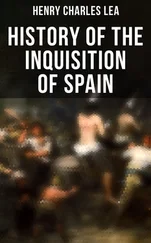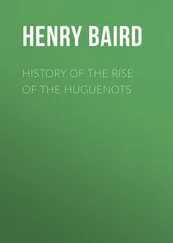It is not easy to set limits to the prosperity attainable by the Peninsula with its natural resources developed by a population combining the vigor of the Castilian with the industrial capacity of the Moor. All that was needed was Christian patience and good will to kindle and encourage kindly feeling between the conquering and the subject race; time would have done the rest. The infidel, won over to Christianity, would have become fused with the faithful, and a united people, blessed with the characteristics of both races, would have been ready to take the foremost place in the wonderful era of industrial civilization which was about to open. Unhappily for Spain this was not to be. To the conscientious churchman of the Middle Ages any compact with the infidel was a league with Satan; he could not be forcibly brought into the fold, but it was the plainest of duties to render his position outside so insupportable that he would take refuge in conversion.
DISTINCTIVE BADGES
The Church accordingly viewed with repugnance the policy of conciliation and toleration which had so greatly facilitated the work of the Reconquest, and it lost no opportunity of exciting popular distrust and contempt for the Mudéjares. We shall see how great was its success with respect to the Jews, whose position offered better opportunity for attack, but it was not without results as respects the Moors. It discouraged all intercourse between the races and endeavored to keep them separate. Even the indispensable freedom of ordinary commercial dealings, which was provided for by the secular rulers, was frowned upon, and in 1250 the Order of Santiago was obliged to represent to Innocent IV that it had Moorish vassals, and to supplicate him for license to buy and sell with them, which he graciously permitted.[202] The most efficacious means, however, of establishing and perpetuating the distinction between the races was that Jews and Moors should wear some peculiar garment or badge by which they should be recognized at sight. This was not only a mark of inferiority and a stigma, but it exposed the wearer to insults and outrages, rendering it both humiliating and dangerous, especially to those, such as muleteers or merchants, whose avocations rendered travel on the unsafe highways indispensable. When the Church was aroused from its torpor to combat infidelity in all its forms, this was one of the measures adopted by the great council of Lateran in 1216, in a regulation carried into the canon law, the reason alleged being that it was necessary to prevent miscegenation.[203] In 1217 Honorius III peremptorily ordered the enforcement of this decree in Castile, but, two years later, consented to suspend it, on the remonstrance of San Fernando III, backed by Rodrigo, Archbishop of Toledo. The king represented that many Jews would abandon his kingdom rather than wear badges, while the rest would be driven to plots and conspiracies, and, as the greater part of his revenues was derived from them, he would be unable to carry out his enterprises against the Saracens.[204] It was difficult to arouse intolerance and race hatred in Spain, and, when Gregory IX, about 1233, and Innocent IV, in 1250, ordered the Castilian prelates to enforce the Lateran canons, San Fernando quietly disregarded the injunction.[205] His son, Alfonso X, so far yielded obedience that, in the Partidas, he ordered, under a penalty of ten gold maravedís or ten lashes, all Jews, male and female, to wear a badge on the cap, alleging the same reason as the Lateran council, but he did not extend this to the Moors and, as his code was not confirmed by the Córtes for nearly a century, the regulation may be regarded as inoperative.[206] The council of Zamora, which did so much to stimulate intolerance, in January, 1313, ordered the badge to be worn, as it was in other lands, and later in the year the Córtes of Plasencia proposed to obey, but were told by the Infante Juan, who presided as guardian of Alfonso XI, that he would, after consultation, do what was for the advantage of the land.[207] In Aragon, the councils of Tarragona, in 1238 and 1282, vainly ordered the canon to be obeyed, and it was not until 1300 that the attempt was made with an ordinance requiring the Mudéjares to wear the hair cut in a peculiar fashion that should be distinctive.[208] In Castile, at length, Henry II, in pursuance of the request of the Córtes of Toro in 1371, ordered all Jews and Moors to wear the badge (a red circle on the left shoulder), but the injunction had to be frequently repeated and was slenderly obeyed. Even so, to it may be attributed the frequent murders which followed of Jews on the highways, the perpetrators of which were rarely identified.[209]
What was the spirit which the Church thus persistently endeavored to arouse in Spain may be gathered from a brief of Clement IV, in 1266, to Jaime I of Aragon, urging him to expel all Mudéjares from his dominions. He assures the king that his reputation will suffer greatly if, for temporal advantage, he longer permits such opprobrium of God, such an infection of Christendom, as proceeds indubitably from the horrible cohabitation of the Moors, with its detestable horrors and horrid foulness. By expelling them he will fulfil his vow to God, stop the mouths of his detractors and prove himself zealous for the faith. [210]The same temper was shown, in 1278, by Nicholas III, when he scolded Alfonso X for entering into truces with the Moors, and, by threatening to deprive him of the share granted to him of the church revenues, incited him to the disastrous siege of Algeciras, the failure of which led him to form an alliance with the King of Morocco.[211] Fortunately this papal zeal for the faith found no Ximenes in Spain to spread it among the people and to kindle the fires of intolerance. The Spanish Church of the period appears to have been wholly quiescent. The only action on record is the trivial one of Arnaldo de Peralta, Bishop of Valencia, from 1261 to 1273, who forbade, under pain of excommunication, his clergy from drinking wine in the house of a Jew, provided they should have heard of or should remember the prohibition; and he further vaguely threatened with his displeasure any cleric who should knowingly buy the wine of a Jew, except in case of necessity.[212]
INFLUENCE OF THE CHURCH
That, in the Confusion which followed the rebellion of Sancho IV against his father, there may have arisen a desire to limit somewhat the privileges of Jew and Moor is rendered probable by the legislation of the Córtes of Valladolid, in 1293, to which allusion has already been made (p. 63), but the decisive impulse which aroused the Spanish Church from its indolent indifference and set it earnestly to work in exciting popular hatred and intolerance, would seem traceable to the council of Vienne in 1311–12. Among the published canons of the council, the only one relating to Moors is a complaint that those dwelling in Christian lands have their priests, called Zabazala, who, from the minarets of their mosques, at certain hours invoke Mahomet and sound his praises in a loud voice, and also that they are accustomed to gather around the grave of one whom they worship as a saint. These practices are denounced as unendurable, and the princes are ordered to suppress them, with the alternative of gaining salvation or of enduring punishment which shall make them serve as a terrifying example.[213] This threat fell upon deaf ears. In 1329 the council of Tarragona complains of its inobservance and orders all temporal lords to enforce it within two months, under pain of interdict and excommunication,[214] and a hundred years later the council of Tortosa, in 1429, supplicated the King of Aragon and all prelates and nobles, by the bowels of divine mercy, to enforce the canon and all other conciliar decrees for the exaltation of the faith and the humiliation of Jews and Moors, and to cause their observance by their subjects if they wish to escape the vengeance of God and of the Holy See. This was equally ineffectual, and it was reserved for Ferdinand and Isabella, about 1482, to enforce the canon of Vienne with a vigor which brought a remonstrance from the Grand Turk.[215]
Читать дальше












